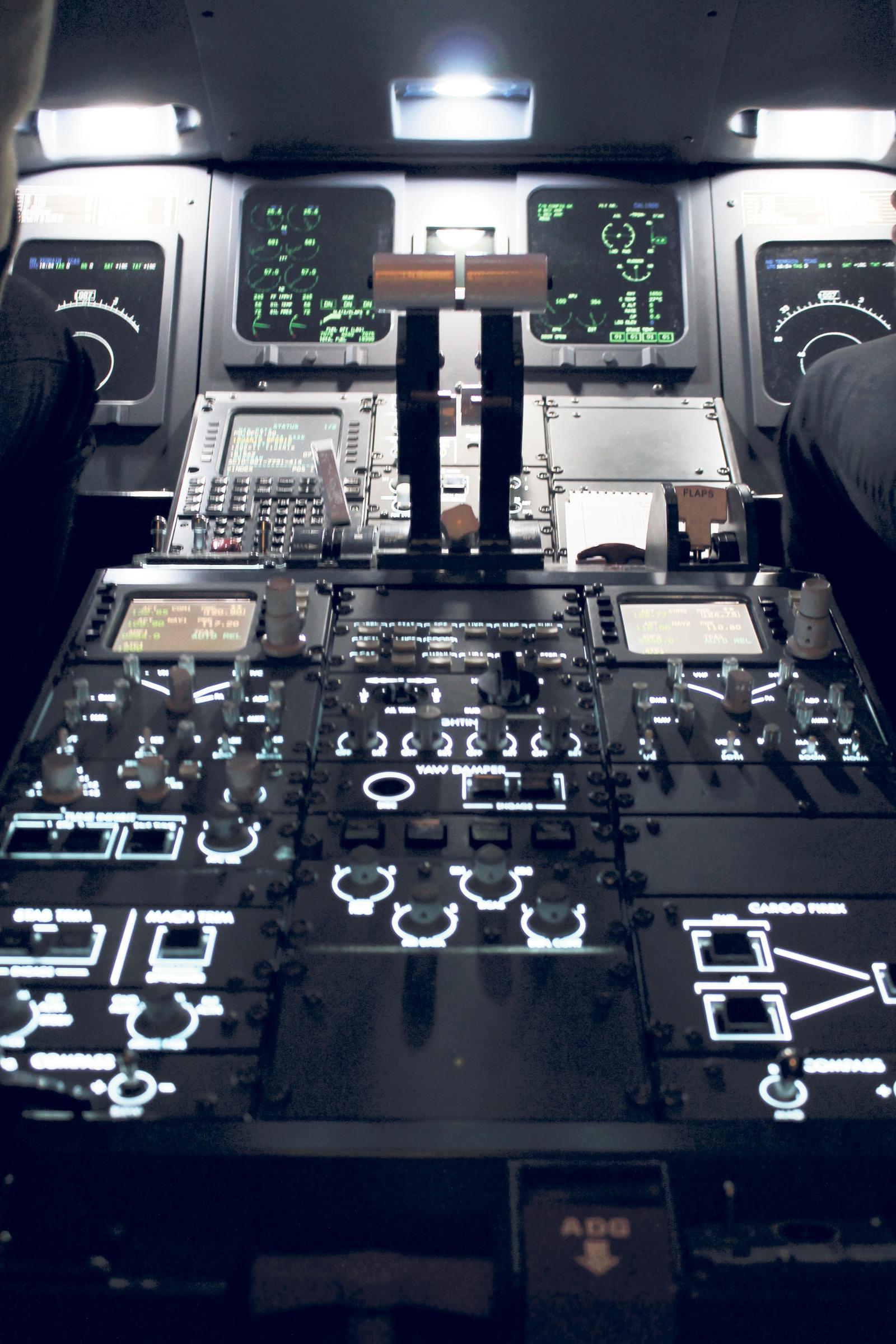USU student pilots receive new CRJ700 flight simulator
The USU aviation program was set back when its AST300 flight simulator broke down in spring 2012, but thanks the acquisition of a brand new, state-of-the-art CRJ700 simulator in December, the department is on course again.
“It’s taken a long time and it’s been a lot of hard work to get everything going to get the proper funds,” said Simon Paquet, a senior flight instructor. “Last spring many of our students didn’t even get to finish up. Decisions started being made and we were finally able to get the funding set for this new sim.”
Even with the proper funding acquired from the university, Paquet said the department is responsible to pay back the expenses.
“Our students pay for every hour that they’re in the simulator,” Paquet said. “Over several years this will actually be paid for through aviation student fees. Everything after that will be extra money that we’ll be able to put away for a future sim. Not everything lasts forever and this will help us to be able to run ourselves so we don’t have to go back to the school and ask for another loan in the future.”
Many commercial airlines require pilots to complete a course in jet-flight simulation before they can operate an actual aircraft. At USU, students can fulfill this prerequisite through training in the CRJ700 simulator. The aviation department is confident this is something that will attract new students to the university.
“To be able to say that we have a CRJ700 simulator really helps us to sell our program,” Paquet said. “We give tours to students who may want to come here and when you mention anything like this to them, 90 percent of the time we get a reaction of ‘This is where I’m going.’ That’s because people are very impressed by it and they know how this is going to help their future, and there aren’t very many other schools that offer this right now.”
The CRJ700 simulator offers students the chance to train for the type of plane that is being adopted by most commercial airlines.
“It’s a simulation of a popular plane that is becoming more widely used all the time,” said Chris Sidor, another senior flight instructor. “A lot of the airlines are transitioning from actual CRJ200 models to the CRJ700. It’s pretty much the same plane but only a little bigger and capable of carrying more passengers. They’re everywhere.”
In addition to having an accredited flight simulator for the use of its students, Paquet attributes the success and growth of the aviation program to instructors and trainers who have flown for companies such as Delta Airlines.
“It’s great to have a simulator but you have to be able to actually teach your students how to properly fly the aircraft and what to do in certain situations,” Paquet said. “We have very good instructors who have brought their experience from their airline training and they transfer the breadth of that knowledge to the students.”
The combination of experienced instructors and technologically advanced equipment sets USU apart from other universities that might offer similar programs.
“Other schools might not have the opportunity of having instructors who came from airlines,” Paquet said. “They likely have a simulator where students can just press buttons and see what happens. We don’t do that here. We have a specific curriculum that teaches the student what they need to know to successfully man a flight from one point to another under different types of weather conditions and scenarios.”
The focus of the department is to prepare students properly for the situations they will face.
“When the student starts ground school, they’re building their plane from the ground up,” Sidor said. “They’re going down the bulbs and going over what every system does. Instead of just sitting there learning how to operate the throttle and takeoff, they learn how each system works and how they work with each other.”
Enrollment in the department has risen recently and the addition of the CRJ700 seems to be aiding that, Paquet said.
“We have about 160 students enrolled in the program right now, so you’re looking at about 40 graduates per year,” Paquet said. “Our program has grown immensely over the last couple of years and we hope that this will bring even more students in. We’ve already been receiving calls and emails about the simulator and the program because of our new website we set up and because of the publicity we’ve been getting.”
As new applications come, the two senior flight instructors are hopeful for the department’s future.
“This is a huge benefit for our school and our program and we look at it as a positive thing,” Sidor said. “By the end of their senior year, students are flying from Phoenix to Tucson. Having that opportunity available will hopefully make the decision easier for future students when they’re choosing where they want to go to school.”
– pchristiansenmusic@hotmail.com

USU’S NEW FLIGHT SIMULATOR will help aviation students receive better practice experience on the ground. The cockpit, seen in these photographs, is covered in controls to mimick a real jet plane. SAMANTHA BEHL photo

